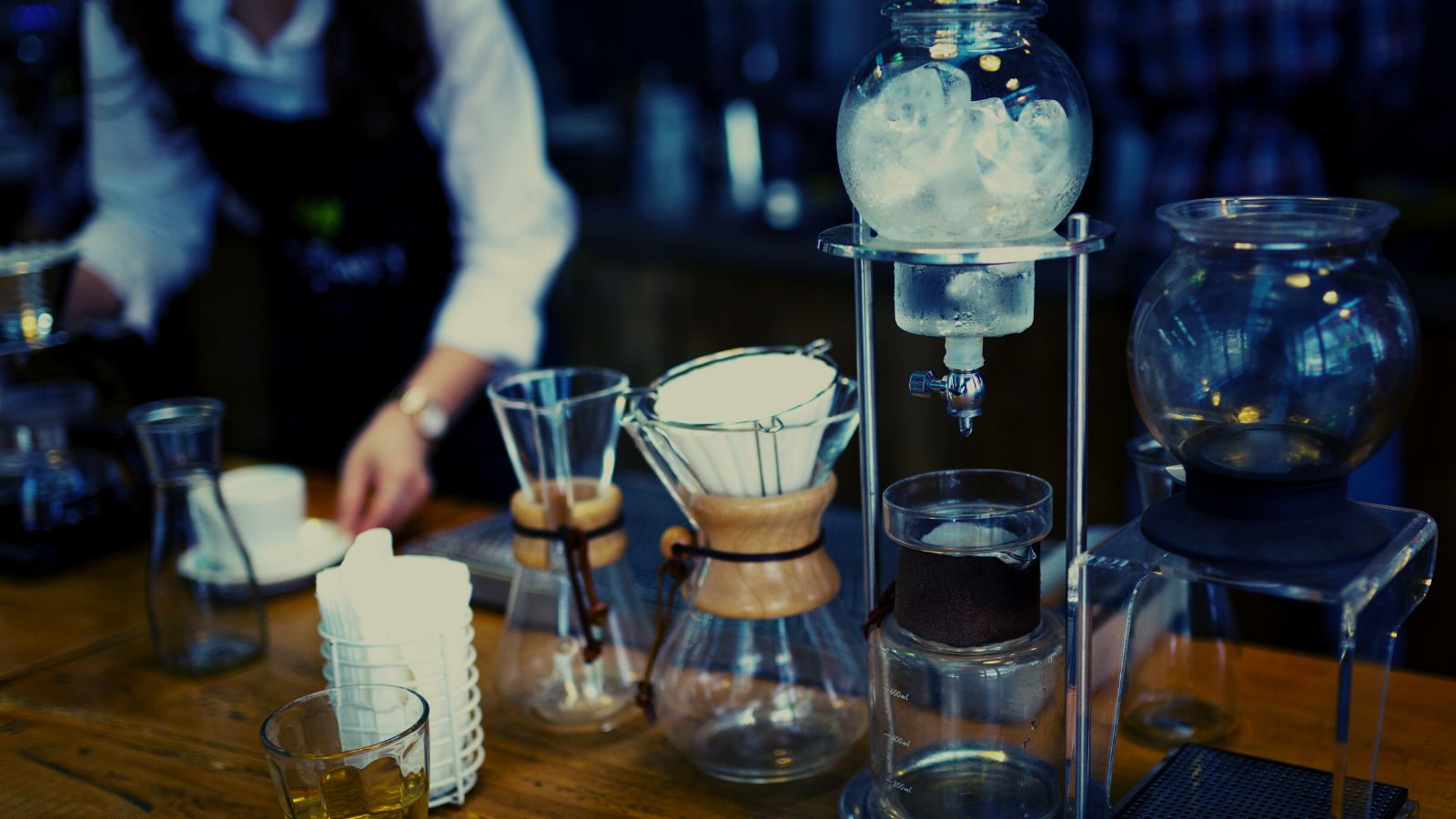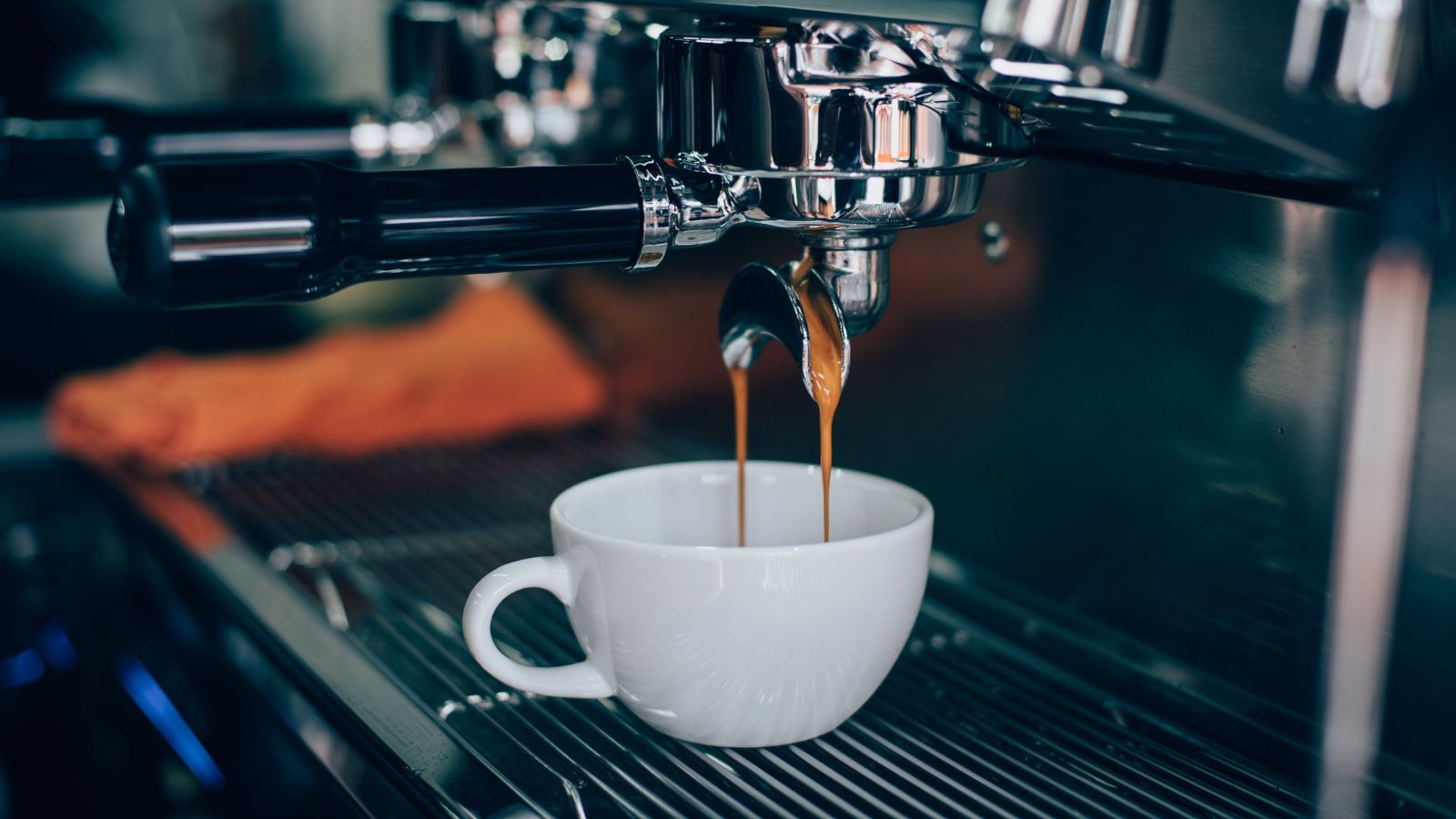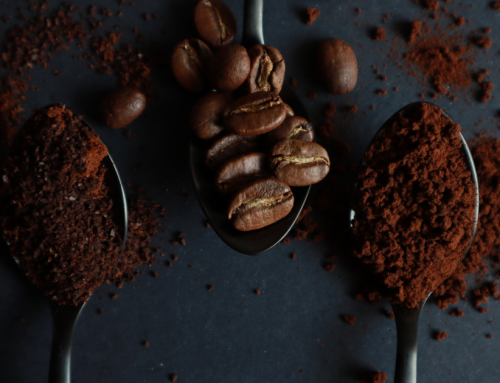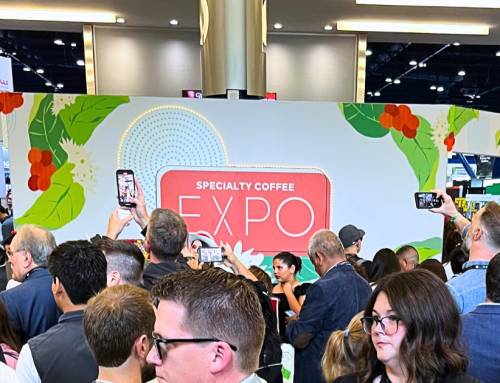
Image by Prarinya Thonghyad from Getty Images
How Much Caffeine is in Coffee? It depends. Determining how much caffeine is in a cup of coffee isn’t as straightforward as it sounds. With so many brewing methods and varieties of coffee beans available today, the amount of caffeine in a single serving of brewed coffee can vary far beyond the standard 95 milligrams per 8-oz cup outlined by the USDA.
In this article, we will explore what affects the amount of caffeine in coffee, the potential risks associated with consuming too much caffeine, how brewing processes affect caffeine levels, the different types of coffee beans and their respective levels of caffeine content (including decaf), as well as other non-coffee sources of caffeine.
What factors affect caffeine content?
How much caffeine is in coffee depends on two main factors:
Type of coffee beans – Caffeine levels between Arabica and Robusta coffee, as well as decaf and low-caf varietals, can vary greatly.
Brewing method – The ratio of water to coffee, grind size, brewing time, temperature, and final serving size all impact the amount of caffeine in the final cup.

Image by Quang Nguyen Vinh from Pexels
How much caffeine is in one cup of coffee?
To answer the question of how much caffeine is in one cup of coffee, it’s important to first define what we mean by one cup. A single serving of coffee can range from a ristretto (15ml) to an espresso (25ml) all the way to an 8oz/250ml cup of filter or cold brew coffee.
According to the USDA Agricultural Research Service, an 8-oz (237ml) cup of brewed coffee contains around 95mg of caffeine. The study measured fast food and home-brewed coffee prepared with tap water.
In a similar study, the USDA reports that a 1-oz (30ml) serving of restaurant-prepared espresso contains around 63mg of caffeine. Unfortunately, neither study provided information about what kind of coffee was used, and the data hasn’t been updated since 2018.
In 2019, Coffeeness carried out their own experiment to measure caffeine levels in servings of coffee brewed with different methods using an omni-roast Honduras Arabica coffee. If you’re reading this blog post on Genuine Origin’s website, you’re more likely to be brewing a similar coffee yourself rather than the mystery coffee used by the USDA. We’ll cover how much caffeine is in Arabica versus Robusta coffee later, but the type of coffee can make a big difference in the caffeine levels of the brewed result.
Coffeeness, with the support of the Institut für Produktqualität (IFP) — the Institute for Product Quality — in Berlin, explored 15 brewing methods and determined that one serving of coffee can contain anywhere from 49 to 280mg of caffeine. On the upper range, that’s nearly triple the amount suggested by the USDA.
Is that a lot of caffeine?
The USFDA recommends that a healthy adult may consume up to 400mg of caffeine a day without dangerous or harmful effects. However, everyone responds to stimulants a little differently, and sensitivities can vary, particularly if someone is taking medication or experiencing other health conditions. That’s why it’s essential to know how much caffeine is in a serving of coffee, especially if your favorite brewing method falls far beyond the USDA 95mg estimate.
Can you overdose on caffeine?
Caffeine makes most coffee drinkers feel great! However, everyone reacts differently and too much caffeine can result in some symptoms as:
- Insomnia
- Jitters
- Anxiousness
- Fast heart rate
- Upset stomach
- Nausea
- Headache
- A feeling of unhappiness (dysphoria)
It’s also possible to overdose on caffeine. The exact amount of caffeine needed to to overdose seems is disputed, but the FDA suggests that 1200mg of caffeine can push you over the edge and a life threatening dose of caffeine is estimated at between 10,000 and 14,000 mg. People who overdose may experience severe symptoms that call for immediate medical treatment, such as:
- Trouble breathing
- Vomiting
- Hallucinations
- Confusion
- Chest pain
- Irregular or fast heartbeat
- Uncontrollable muscle movements
- Convulsions
Caffeine has an average half-life of around 1.5 to 9.5 hours in the blood, a wide range that makes it difficult to determine how much caffeine is still in the bloodstream and when continued consumption can lead to overdose.

Image Chevanon Wonganuchitmetha from chevanonwonganuchitmetha
How much caffeine is in an espresso vs. pour over vs. other brewing methods?
Per typical serving of each brewing method, here are the average amounts of caffeine you’re drinking, according to Coffeeness:
- Cold brew, steeped for 24 hours (250ml): 280mg
- Cold drip, steeped without ice (250ml): 247mg
- Cold brew, stepped for 8 hours (250ml): 238mg
- French press (250ml): 223mg
- Aeropress (150ml): 204mg
- Pour over filter (250ml): 185mg
- Cold drip, stepped with ice (250ml): 182mg
- Chemex (250ml): 172mg
- Drip coffee maker (250ml): 170mg
- American press (250ml): 146mg
- “Drip” coffee from an automatic espresso machine (200ml): 116mg
- Espresso (25ml): 68mg
- “Espresso” from an automatic espresso machine (25ml): 68mg
- Ristretto (15ml): 63mg
- Stovetop espresso maker (30ml): 49mg
Many cafés use the standard 25ml espresso as the base for their milk coffee beverages. Therefore, how much caffeine is in a latte, cappuccino, mocha, and other common café menu items depends on how many shots of espresso are in the drink. Small-sized milk coffees may only have a single shot, while larger cups might have double shots. However, the volume of milk, ice, and other ingredients has little effect on the amount of caffeine and only impacts the intensity of the coffee’s flavor.
What’s the difference between Arabica vs. Robusta caffeine levels?
Arabica and Robusta (C. canephora) are two different species in the Coffea genus. How much caffeine there is in Arabica and Robusta coffee actually plays a significant factor in the overall differences between the two species, including their respective growing conditions and cup profiles.
When you grind down to the basics, a single Arabica coffee bean contains around 1.2% caffeine, while a Robusta bean contains 2.2% caffeine, nearly double the amount. As a result, one 8-oz cup of Robusta coffee can have as much as 265mg of caffeine, which is as much, if not more, than some energy drinks. That’s why some roasters include Robusta coffee as part of “extra strong” blends to boost caffeine levels.
Robusta’s higher caffeine content also adds bitterness to the cup profile but also acts as a natural pest resistance for the plant itself. Robusta trees can thrive at lower altitudes, at higher temperatures, and with less care than Arabica trees, making them well-suited for commercial coffee farming and mass-produced coffee products.
Does decaf coffee have caffeine?
Short answer: yes! The decaffeination process doesn’t remove 100% of the caffeine in coffee. Exactly how much caffeine is there in decaf coffee? USDA and EU regulations stipulate that decaffeinated coffee beans cannot contain more than 0.1% caffeine. To get Arabica coffee beans down from 1.2% to 0.1% caffeine content, the decaffeination process removes around 97% of the caffeine compounds. That means there is around 2mg of caffeine in an 8-oz (237ml) cup of brewed decaf coffee and around 0.3mg of caffeine in a 1-oz (30ml) decaf espresso.
The most common methods used to decaffeinate coffee are solvent-based and water-based decaffeination processes. Solvent-based decaf coffee processes use ethyl acetate (sugarcane decaf), methylene chloride (MC decaf), or liquid carbon dioxide to extract the caffeine (ie, decaffeinate) from the beans while leaving other flavor components intact. Water-based decaffeination processes like the Swiss Water Process or Mountain Water Process use pure water to extract caffeine molecules and flavor compounds. After the caffeine is discarded, the flavored water is reintroduced to the decaffeinated green coffee beans for reabsorption.
Both solvent- and water-based decaf-coffee processes can produce a cup of flavorful decaf coffee without significant loss in flavor or aroma. They can be applied to coffee beans with any processing method, including natural, washed, or honey-processed coffee. However, your cup of decaf coffee is still going to have a little caffeine.

Picking ripe red Arabica coffee cherries.
How much caffeine is in low-caffeine coffee varietals?
Coffee varietals with naturally low levels of caffeine are increasing in popularity. The main benefit of these varietals is being able to enjoy coffee that doesn’t need to undergo any industrial decaffeination processes to achieve its lower caffeine content. The coffee stays true to its terroir and often features increased sweetness due to having less bitterness from the absence of high caffeine levels.
Low-caffeine Arabica coffee varietals include Laurina, primarily grown in Central America and Brazil, and rare coffee species like Coffea lancifolia, Coffea racemosa, and Coffea eugenioides. Laurina was first discovered on Réunion Island, near Madagascar, and named by a French botanist due to the tree’s resemblance to a laurel shrub with glossy leaves. The varietal also goes by the name of Bourbon Pointu due to its likely emergence as a mutation of the Bourbon plant and the pointy shape of its coffee beans.
Laurina coffee is unique. It’s light-bodied, with low acidity and around half or one-third the caffeine content of typical Arabica varieties. As a result, it contains almost no bitterness and usually features a creamy, lactic acidity.
While its low caffeine level makes Laurina highly attractive as a decaf alternative, that same characteristic makes it unlikely to ever replace decaf entirely. Coffee plants with less caffeine are more vulnerable to pests and require more effort from producers to cultivate successfully. Laurina trees are also delicate and slow to grow, limiting the volume and hiking up prices for this scarce low-caf coffee.
What are some other sources of caffeine?
While coffee is usually the go-to source for caffeine, many other foods and beverages provide a similar energy boost. Here are some common ones and their respective caffeine contents per serving:
- Black tea (8oz/237ml): 47mg
- Green tea (8oz/237ml): 28mg
- Coca Cola (12oz can): 34mg
- Diet Coke (12oz can): 46mg
- Energy drink (8oz/237ml): 72mg
- Red Bull (8.4oz can): 77mg
- Milk Chocolate (100g): 20mg
- Dark Chocolate (100g): 43mg
- Cocoa (8oz/235ml): 12mg
- Nutrition Bars (40g): 1.2mg
- Cliff Bar (68g): 49mg
What is the best source of caffeine?
We might be biased, but coffee will always be our first choice when we need an energy boost during the day. There are many different ways you can enjoy varying levels of caffeine in coffee, including various brewing methods, low-caf coffee varietals, and even decaf coffee beans. Explore Genuine Origin’s green coffee portfolio for a variety of options to keep yourself (and your customers) sufficiently caffeinated every day.






